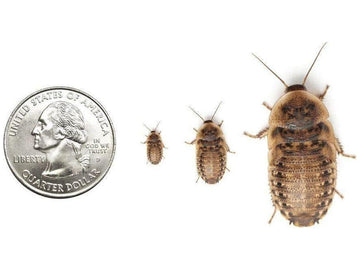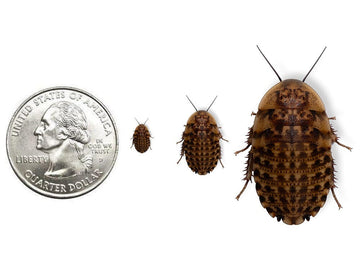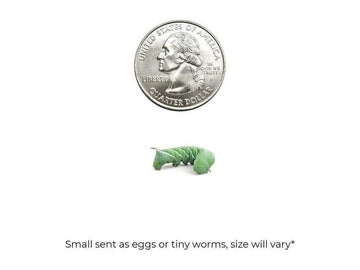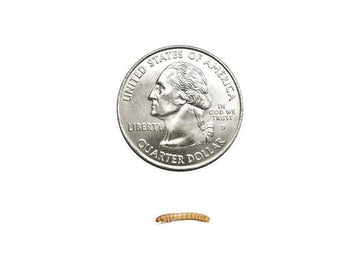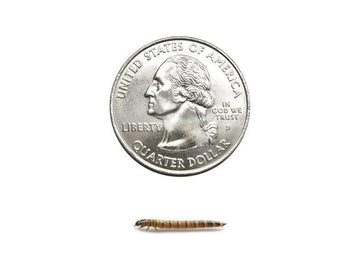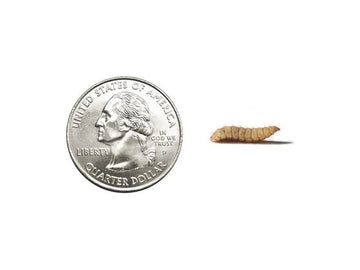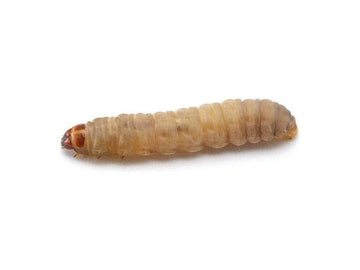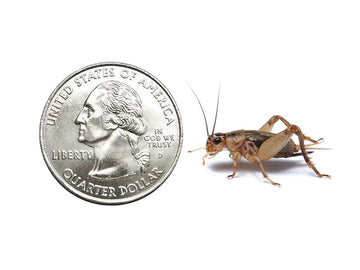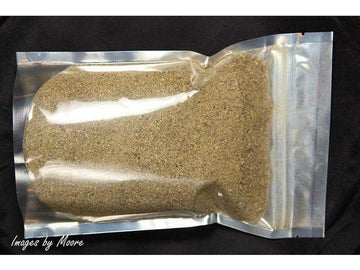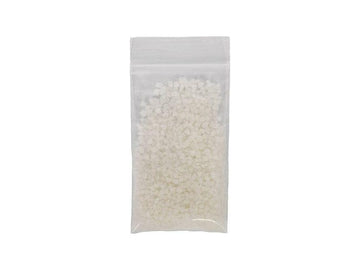Red eyed crocodile skinks (Tribolonotus gracilis) are small, crepuscular, terrestrial lizards native to New Guinea. They prefer the cool, humid floor of tropical rainforests, often near bodies of water.
Red eyed crocodile skinks have a spiny, heavily-armored body which gave them their common name. They are dark brown to black in color, with a distinctive red-orange oval around each eye. The scales on their back feature many backward-curving spikes.
Although relatively easy to find in the pet trade, red eyed crocodile skinks are not easy pets. They’re sensitive to poor husbandry and are not handleable, making them intermediate- to advanced-level difficulty. With good care they usually live 8-10 years.
Minimum terrarium size for red eyed crocodile skinks
The absolute minimum terrarium size for a single red eyed crocodile skink is 30”L x 12”W x 12”H, or a 20 gallon long tank. Of course, larger is always better!
Housing multiple red eyed crocodile skink is possible if you plan on breeding and keep a single pair. However, if you do not plan on breeding, the animal should be solitary, as both males and females are territorial toward members of the same sex.
Do red eyed crocodile skinks need UVB?
Technically they can survive without it, but we still recommend providing appropriate UVB lighting for crocodile skinks. UVB lighting helps provide a clear day/night cycle, provides all of the vitamin D that your pet needs, strengthens the immune system, facilitates better digestion, and other benefits.
The best UVB bulbs for red eyed crocodile skinks housed in a 30” x 12” x 12” terrarium are:
For best results, house the UVB bulbs in a reflective Arcadia or Vivarium Electronics fixture. Position the lamp on the same side of the terrarium as the heat lamp. UVB is blocked by glass and plastic, so placing the terrarium in front of a window doesn’t count as “free UVB” — in fact it can make your terrarium too hot due to the greenhouse effect. Don’t forget to replace your bulb every 6-12 months per manufacturer recommendation.
Lights should be on for 12 hours/day.
Best temperature for red eyed crocodile skinks
Although they are commonly considered to be “room temperature” reptiles, red eyed crocodile skinks do benefit from having a low-temperature basking area. After all, they’re still reptiles, and that means they need a range of temperatures in their enclosure that allow them to thermoregulate.
Red eyed crocodile skinks should have a low basking temperature between 82-89°F, as measured by a digital probe thermometer with the probe positioned in the basking area. The cool zone of the enclosure should stay between 72-78°F, and nighttime temps can drop as low as 68°F.
Provide heat for your red eyed crocodile skink with a low-wattage incandescent bulb. White heat bulbs are the best way to imitate the warmth of sunlight indoors, and considered to be a superior form of reptile heating by experts. Do not use red or blue bulbs, as these are not as effective.
Best humidity levels for red eyed crocodile skinks
Red eyed crocodile skinks need high humidity levels of 80-95%, and no lower than 70%. Humidity should be measured via digital probe hygrometer, with the probe placed in the middle of the terrarium.
Increase humidity by misting the enclosure 2x/day with a spray bottle. Mist first thing in the morning, and then again at night if needed. Aside from raising humidity, this also provides your an important source of drinking water! If you still need help maintaining humidity, installing a cool mist humidifier to run at night is useful. Finally, your skink should always have access to a humid cave/burrow.
Best substrate for red eyed crocodile skinks
Providing a layer of naturalistic substrate (“bedding”) will help maintain correct humidity levels and also helps make your enclosure more attractive! We recommend the following substrates for red-eyed crocodile skinks:
Layering clean, chemical-free leaf litter on top of the substrate can also help with humidity.
Substrate should be at least 3” deep and completely replaced every 3-4 months. Remove poop and urates daily, along with contaminated substrate.
How to decorate a red eyed crocodile skink terrarium
An empty terrarium makes for a bored lizard, reducing its quality of life. Keep your pet entertained and engaged with its environment with the strategic use of décor items that encourage it to exercise natural behaviors!
Red eyed crocodile skinks spend most of their time on the ground, but they still do some low climbing, so you will need objects that accommodate this lifestyle and meet their other needs. At bare minimum you need at least two hiding places. Here are some ideas:
- hides
- branches
- cork tubes
- cork flats
- ledges
- more live or artificial plants
- textured background
What to feed to a red eyed crocodile skink
Red eyed crocodile skinks are insectivores, which means that they need to get the majority of their nutrition from insects. Juveniles should be fed 2-3 insects daily, and adults should be fed the same amount every other day. Each insect should be roughly half the size of the skink’s head.
Feeder insects for red eyed crocodile skinks: dubia roaches, discoid roaches, red runner roaches, crickets, black soldier fly larvae, hornworms, mealworms, mealworm beetles, silkworms, earthworms
Supplements
You will also need calcium and vitamin supplements to prevent your pet from developing a deficiency. We recommend Repashy Calcium Plus LoD, lightly dusted on all of your lizard’s feeder insects at every other feeding.
Water
Of course, don’t forget a medium-sized, shallow bowl for your lizard to drink from and soak in! Change the water daily and scrub the bowl with a reptile-safe disinfectant weekly, or whenever it becomes soiled.
How to handle your red eyed crocodile skink
Reptiles generally don’t appreciate petting and handling in the same way that dogs and cats do. Red eyed crocodile skinks generally prefer to be left alone, and attempting to handle them is likely to just stress them out. If you want to bond with your lizard, try hand-feeding it with feeding tweezers instead.
*This care sheet contains only very basic information. Although it’s a good introduction, please further your research with high-quality sources. The more you know, the better you will be able to care for your pet!


